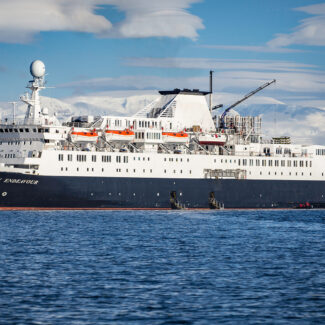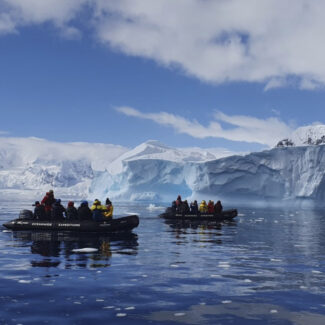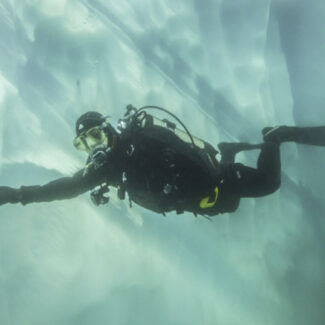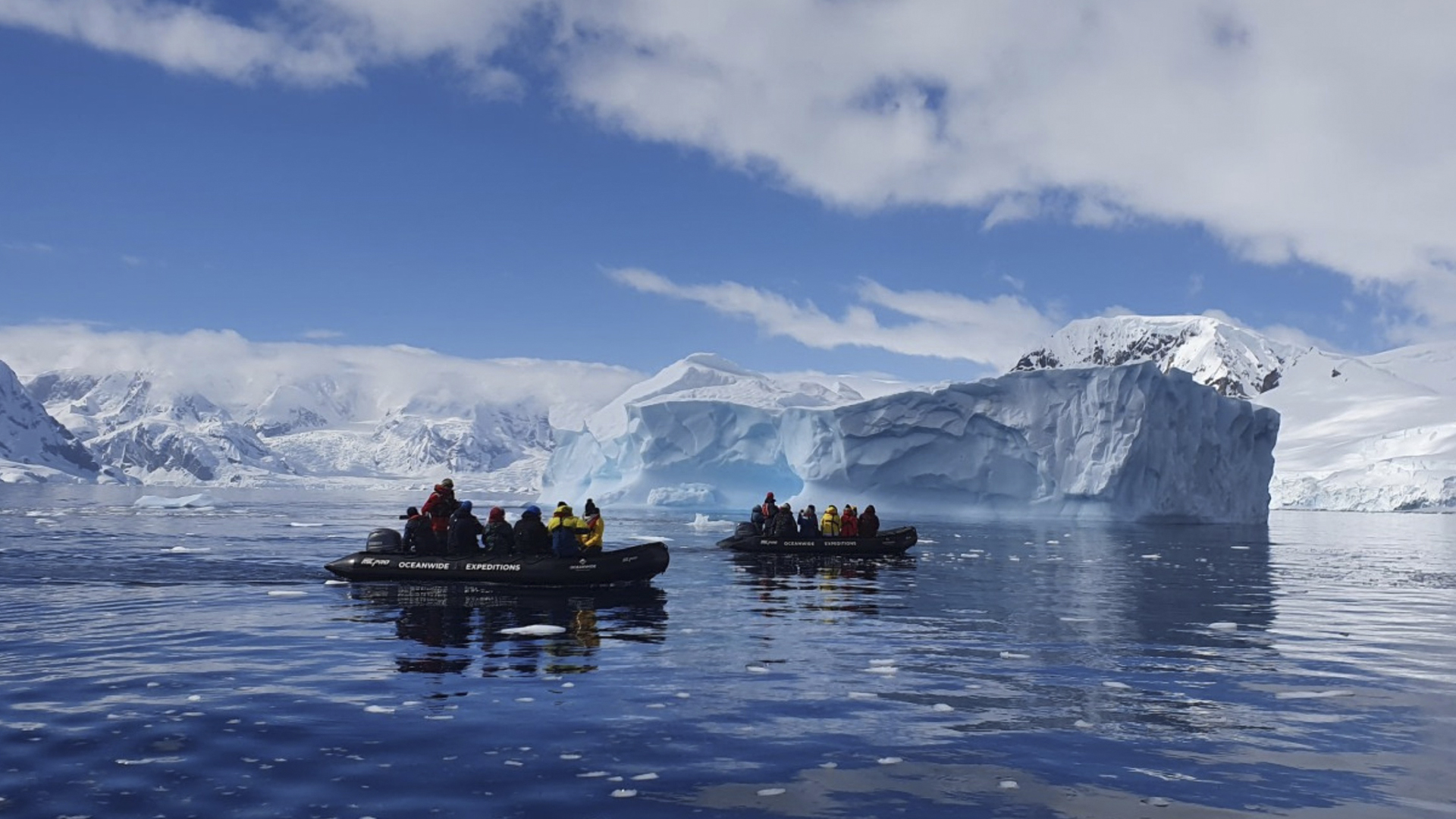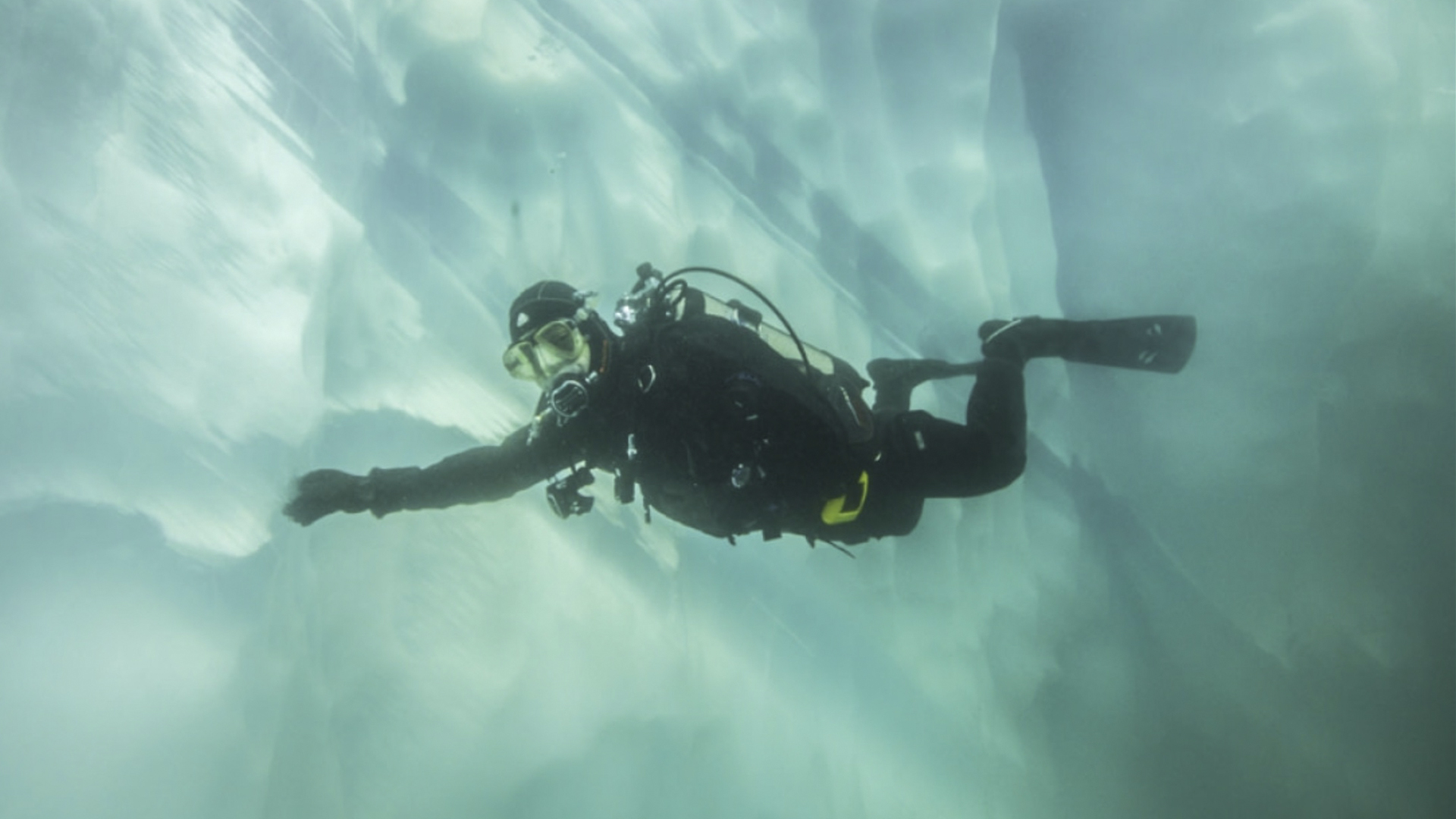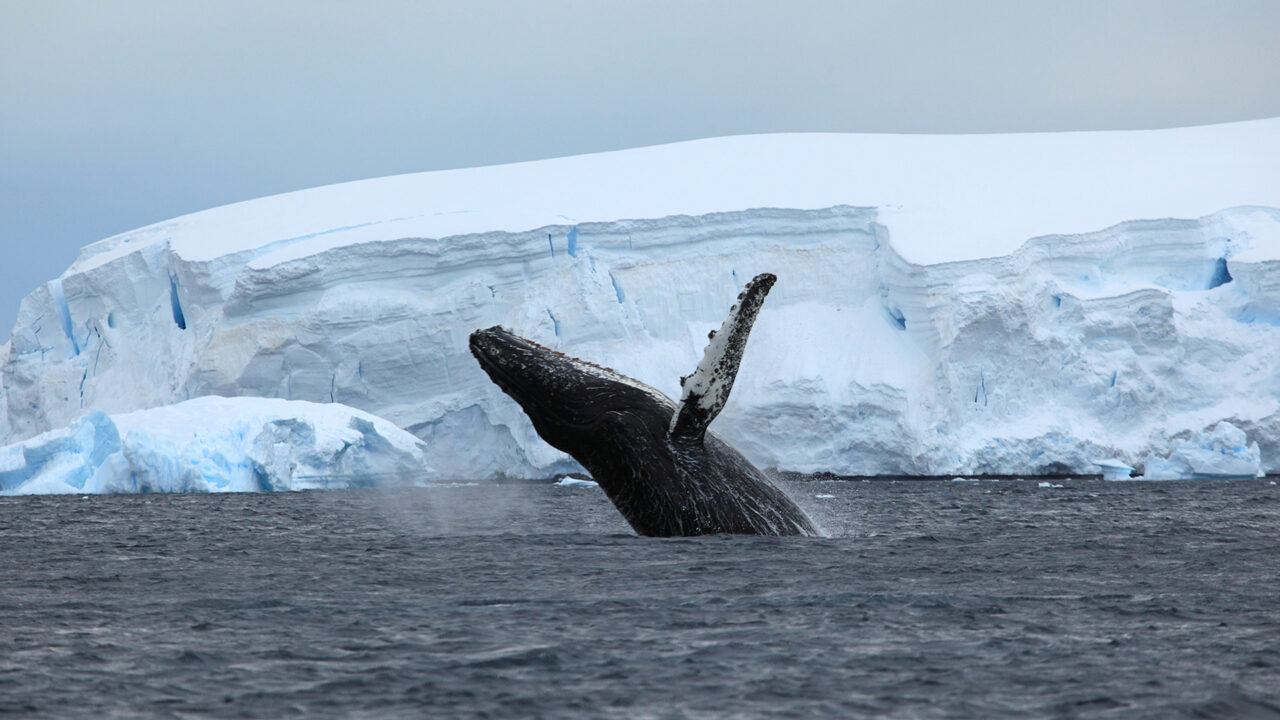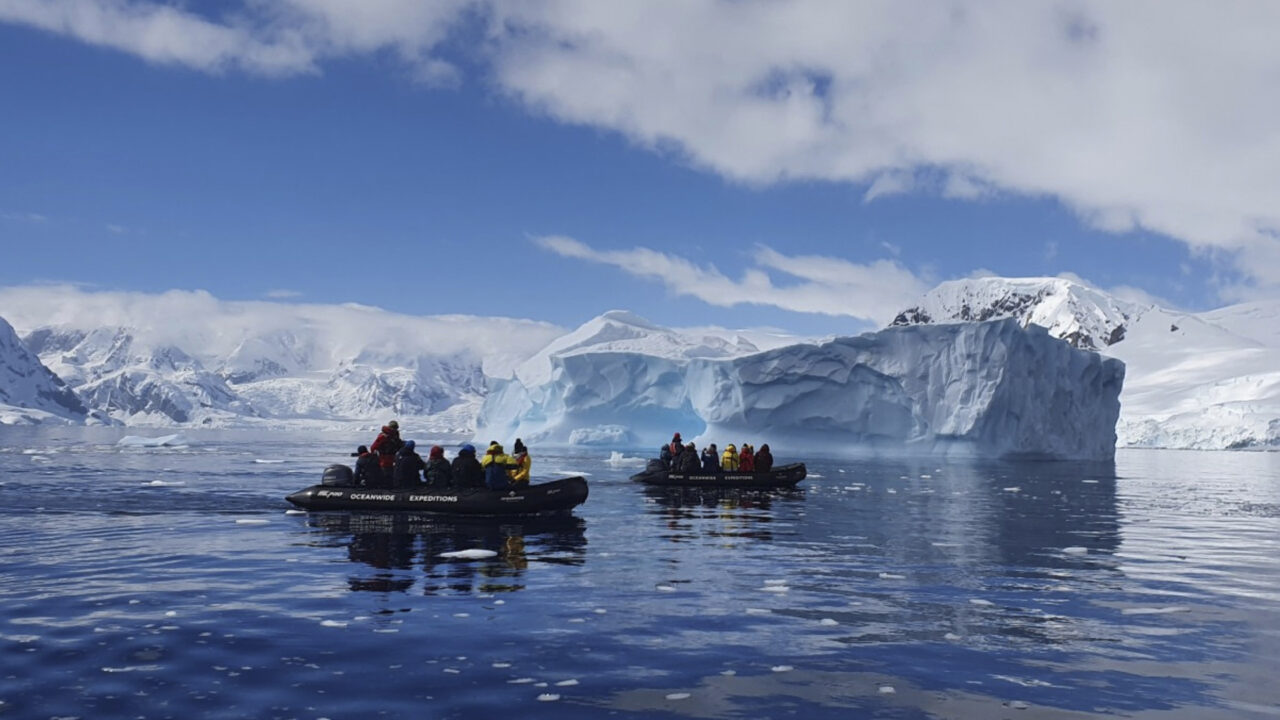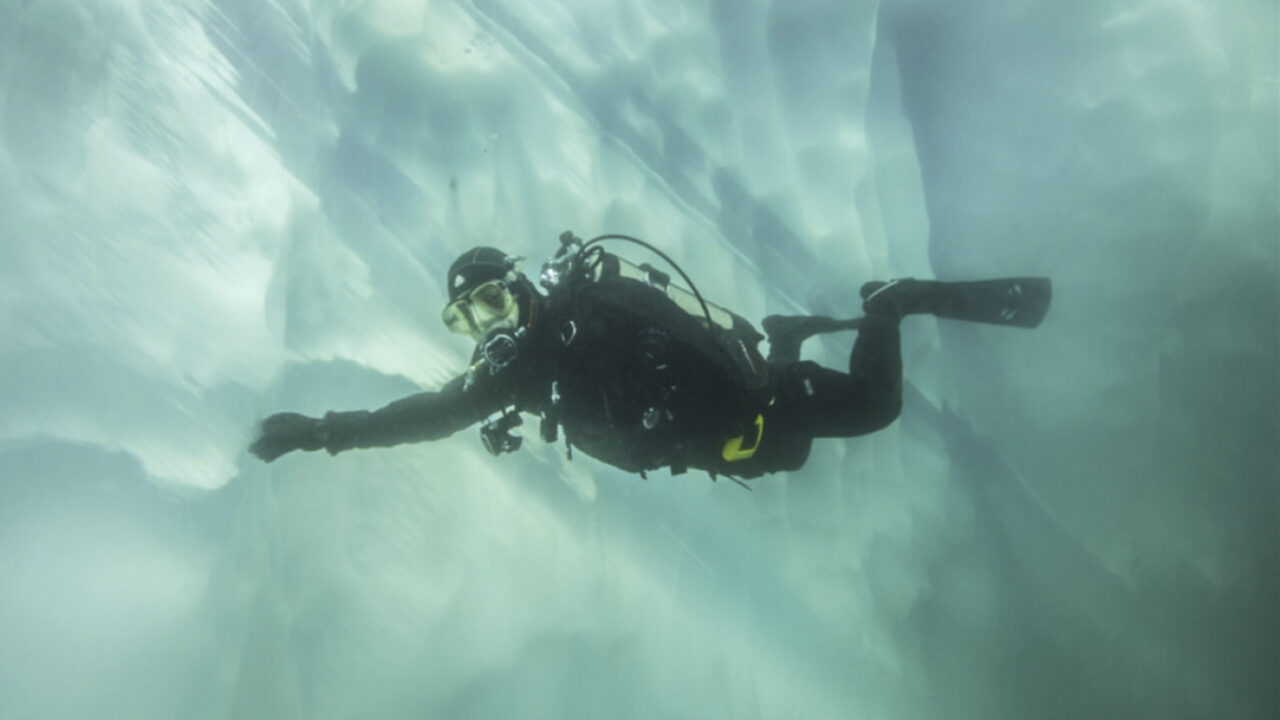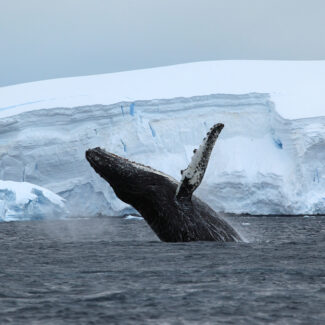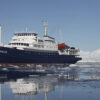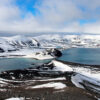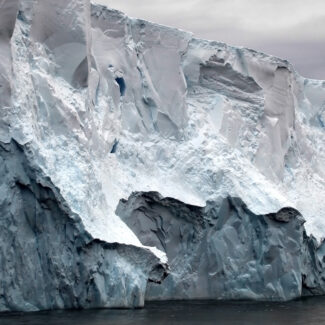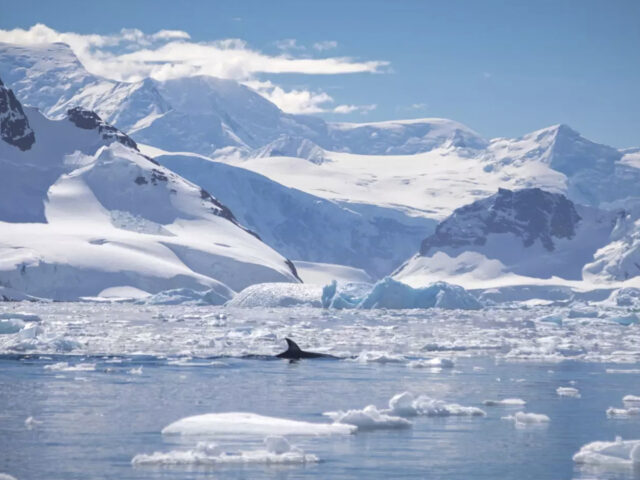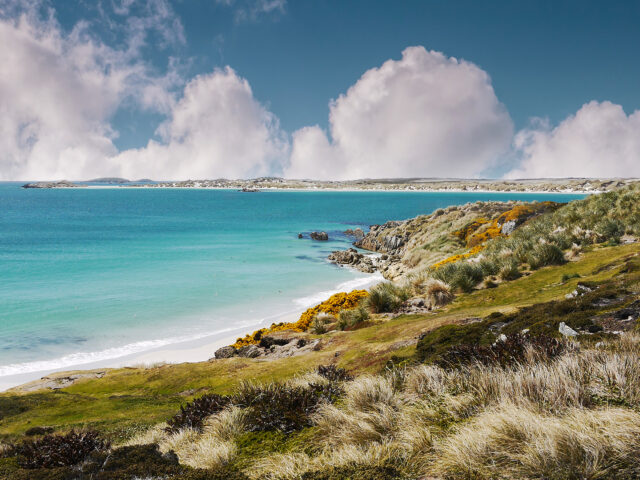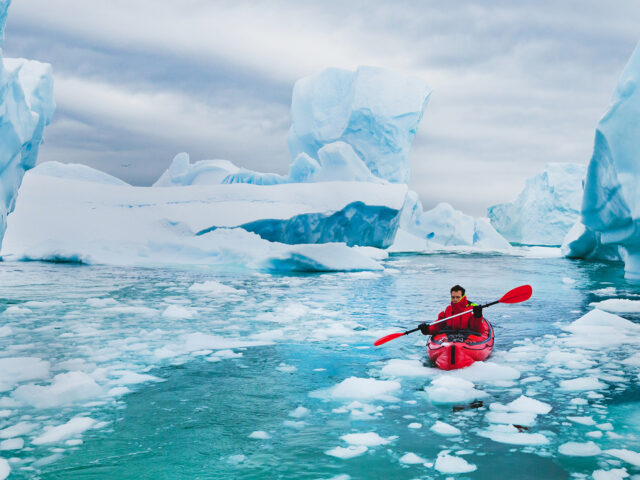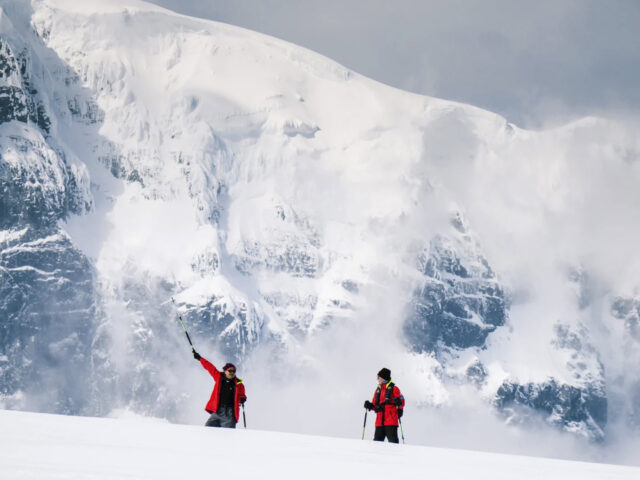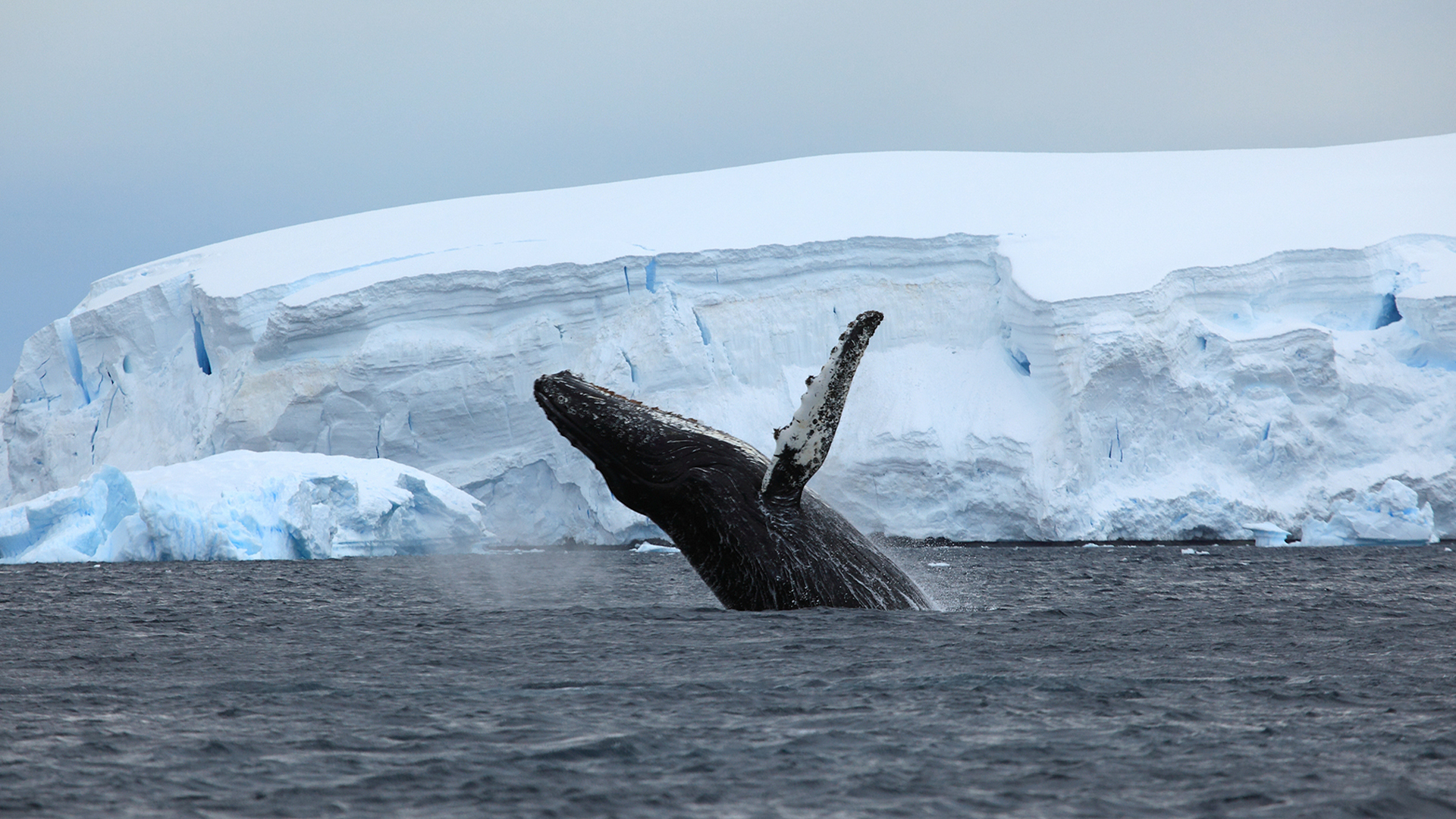
Antarctica - Polar Circle - Whale Watching
Highlights
- Witness late-summer wildlife spectacles: humpback whales feeding on krill and penguin chicks preparing to fledge
- Cross the iconic Antarctic Circle, joining the select few who venture this far south into the world’s most remote wilderness
- Explore awe-inspiring sites like Neko Harbour, the dramatic Lemaire Channel, and the abandoned research station on Detaille Island
This 12-day expedition takes you deep into the Antarctic Peninsula, past the renowned Antarctic Circle, where late-summer wildlife abounds and landscapes are frozen in awe-inspiring beauty. Departing from Ushuaia, Argentina, you’ll sail through the Drake Passage, following the footsteps of early explorers, encountering soaring albatrosses and possibly fin whales along the way.
As late summer draws in, humpback whales feast on krill while penguin colonies bustle with chicks learning to survive. Your journey includes incredible landings at sites like Deception Island’s volcanic harbor, Neko Harbour’s glacier-clad landscapes, and the serene, ice-filled waters of Paradise Bay. Zodiac cruises allow you to get closer to leopard seals, whales, and striking icebergs. Adventurous souls can even kayak amid the ice or hike along penguin-dotted shores.
Crossing the Antarctic Circle will leave you with a profound sense of achievement, knowing you’ve ventured where few have been. This expedition is ideal for those seeking immersion in nature’s most untouched realm, offering even the most seasoned of explorers a life-changing experience. You’ll return with memories of majestic glaciers, rare wildlife, and the deep sense of wonder that only the farthest reaches of the world can evoke.
Standard Activities
About the Antarctica - Polar Circle - Whale Watching
This 12-day expedition takes you deep into the Antarctic Peninsula, past the renowned Antarctic Circle, where late-summer wildlife abounds and landscapes are frozen in awe-inspiring beauty. Departing from Ushuaia, Argentina, you’ll sail through the Drake Passage, following the footsteps of early explorers, encountering soaring albatrosses and possibly fin whales along the way.
As late summer draws in, humpback whales feast on krill while penguin colonies bustle with chicks learning to survive. Your journey includes incredible landings at sites like Deception Island’s volcanic harbor, Neko Harbour’s glacier-clad landscapes, and the serene, ice-filled waters of Paradise Bay. Zodiac cruises allow you to get closer to leopard seals, whales, and striking icebergs. Adventurous souls can even kayak amid the ice or hike along penguin-dotted shores.
Crossing the Antarctic Circle will leave you with a profound sense of achievement, knowing you’ve ventured where few have been. This expedition is ideal for those seeking immersion in nature’s most untouched realm, offering even the most seasoned of explorers a life-changing experience. You’ll return with memories of majestic glaciers, rare wildlife, and the deep sense of wonder that only the farthest reaches of the world can evoke.
Itinerary Day to Day
End of the world, start of a journey
Your voyage begins where the world drops off. Ushuaia, Argentina, reputed to be the southernmost city on the planet, is located on the far southern tip of South America. Starting in the afternoon, you embark from this small resort town on Tierra del Fuego, nicknamed “The End of the World,” and sail the mountain-fringed Beagle Channel for the remainder of the evening.
Path of the polar explorers
Sights of late summer Antarctica
Familiar seas, familiar friends
There and back again
Route Map
Antarctica’s dazzling icecaps, colossal glaciers, and towering mountains are rivaled only by the white-sand beaches and lush flora of the sub-Antarctic islands. Both areas host a large variety of penguins, whales, seals, and seabirds.
During these dives, you may observe penguins, fur seals, and perhaps even leopard seals. Many of the sub-Antarctic islands are also rich with krill, one of the prime food sources for many marine species and therefore highly useful in locating wildlife.
General information on our diving activity
- Divers must be experienced with cold-water, dry-suit diving.
- We aim for one to two dives per day (one in the morning, one in the afternoon).
- Our ability to dive depends on local ice and weather conditions.
- All dive guides are certified and experienced experts in their field.
- We offer basic equipment on board (e.g., tanks, compressors, and weights), but divers must bring their own personal gear.
- We make dives from our Zodiac boats.
- Our maximum dive depth is around 20 meters / 65 feet.
- We may observe sea squirts, squat lobsters, spider crabs, soft corals, anemones, peacock worms, dogfish, sea snails, crabs, sea butterflies, shrubby horsetails, jellyfish, sea hedgehogs, kelp walls, and several species of starfish.
- Please contact us for details on booking this activity
Weather in the polar regions
In Antarctica’s Southern Hemisphere summer (December to February), temperatures are generally close to freezing, varying between -5 to 8°C (23 to 46°F). Combined with the strong katabatic winds of this area, the cold can often feel even colder.
Warm and waterproof clothing (and a flexible attitude) is required for Antarctica. Severe weather may lead to the cancellation of landings and dives, as excursions can only take place in safe conditions.
Program changes due to weather and ice
We know our dive destinations in great detail and are always exploring new sites, but every dive can encounter surprises. It is important to remember that nature calls the shots in the polar regions. Personal expectations that are not met are not grounds for reimbursement.
Please note that our itinerary is always subject to safe local conditions. It is always possible that ice, weather, or wildlife will force us to change our sailing schedule. It is also possible that certain bays or fjords will be closed because of ice.
In such cases, we always have planned alternatives. But again, these alternatives are not grounds for reimbursement. When changing the itinerary, we assure you that the captain, expedition leader, and dive leader will do their utmost to provide you an equally good replacement program.
Dive experience and qualifications
Our polar dive voyages are not for beginners. They are meant for experienced divers who are familiar with cold-water, dry-suit diving. You must have logged at least 30 such dives to participate.
Before departure, please present an internationally accepted diving certificate and logbook. Also, we ask that you include copies when completing your diver personal information form.
The first dive of our voyage will be a “check dive” to try out your gear and assure our dive leader that you have enough experience to participate. This is for your safety and that of our guides.
If our dive leaders feel that any diver does not meet the necessary experience, they can exclude that diver from the dive program. In this event, Oceanwide Expeditions cannot be held responsible and will grant no claims for reimbursement.
All divers are required to follow the instructions of dive leaders and guides at all times. All divers are participating 100% at their own risk, which is also the case during land excursions.
Expedition team, excursions, & dive leaders
Our expedition team consists of one expedition leader and multiple guide-lecturers. All members of the team are extensively experienced in working in the polar wilderness.
Every morning after breakfast, you will be informed of the day’s program (position of the vessel, general information about the area, itinerary, and expected wildlife during the excursions). The excursions will then be evaluated in the afternoon and after dinner.
Occasionally, the expedition team will organize lectures, sometimes supported with slide shows, to inform the passengers about various features of the polar environment.
Our dive leaders are highly experienced instructors assisted by one or two dive guides. The main language of all guides and dive operations is English unless otherwise stated.
Special note: Safety first
Diving in the remote polar regions is no more dangerous than normal scuba diving as long as you follow one important rule: safety first.
All divers looking for dangerous stunts or deep dives are asked to refrain from this activity. There are no decompression chambers in Antarctica or the Arctic, medical care is almost non-existent, and there is hardly any infrastructure. Although we have a doctor on board the vessel for first-aid assistance, we cannot accept risky ventures from any divers.
DIVE PROCEDURES
Approach to dive site
In normal circumstances, the number of divers per Zodiac is six passengers as well as one driver-guide. Always watch your valuable gear when embarking and disembarking the Zodiacs. We are not liable for the loss of individual equipment.
The voyage starts with a check dive so that all divers can get used to the cold water, try out their equipment, and determine the weights they need. Before each dive, there will be a briefing about the dive site, weather and ice conditions, and the procedure of the dive.
Currents
Water currents can be present anywhere and at any time. The dive guides will select a dive spot that is safe and also give information about returning to the Zodiacs if needed. Normally there is very little current where we dive, if any.
Dive buddy
Dives will be made using the buddy system. The dive guide will not be in the water to accompany and lead divers. Rather, dive guides stay on the surface for the divers’ safety. Divers are expected to be experienced enough to read their compasses and depth gauges and look after each other. Buddy teams are important, so we let our divers match themselves as much as possible. In cases where divers have not paired up or are in doubt, dive guides sit with divers to discuss their expectations and experience. We try to pair people of similar interests and experience. If there is an uneven number of divers and three-person groups are not feasible, dive guides will accompany divers.
Dive guide-to-diver ratio
Our programs allow for six divers per dive guide, with a preferred maximum of 24 diving passengers per voyage. Groups larger than 24 will need to split dive activities, and we also may reduce the number of dives so that we can safely manage activities.
Drifting pack ice
This is a real hazard. If pack ice approaches while divers are underwater, it can be hard to see people if they surface in the middle of it. For this reason, it is important to only dive around icebergs that are hard aground or floating in water clear of brash or pack ice. Many of the dive sites have slopes or faces that go deeper than the 20 meters (65 feet) maximum limit for our dives. Divers must act responsibly and show self-discipline.
Equipment
Once you have settled into your cabin, you will be given an area to store and hang your equipment. Every diver is expected to prepare their own equipment in advance of each dive. Bring your own spare parts for regulators and dry suits in case of leaks or damage. Divers are expected to set up and carry their own equipment in and out of the Zodiac as well as up and down the gangway.
Number of dives
We plan for one to two dives per day, but an exact number of dives cannot be given due to the possibility of variable ice and weather conditions.
Visibility
Ample pack ice often means flat water with clear visibility. Little pack ice can mean plankton blooms, because there is more daylight and possibility of swells. But the ice and weather conditions are different every year, so there is no way to predict them.
DIVE EQUIPMENT
Please bring the following equipment yourself:
- Dry suit with hood
- Two sets of warm underwater garments
- Dry gloves or wet gloves/mitts adequate for sub-zero waters
- Two freeze-protected regulators. (We dive with special bottles that have two separate outlets, and we use 12L steel tanks fitted with a Y or H valve configuration and DIN or Yoke (INT) adaptable connections.)
- Stabilizing jacket or BC with quick-release capability and sufficient lift capacity
- Pressure gauge
- Compass watch
- Knife and torch
- Mask, fins, and snorkel
Dry suits
These are the only adequate protection in Arctic and Antarctic waters, which can be as cold as –1°C (30°F). The type of dry suit you use is not important so long as it fits you, is waterproof, and you are comfortable using it.
Neoprene dry suits have the benefit of good stretch and extra insulation. Shell suits provide no extra insulation but are lighter and dry quicker. They serve only to keep you dry and require extra layers of garments under the suit. If possible, bring a small dry suit repair kit.
Dry suit accessories
If a hood is not attached to your dry suit, you will need to bring one. A 7mm neoprene hood with face and neck seal is recommended.
Regular 7mm neoprene semi-dry gloves or mitts may also be used with any dry suit and are relatively easy to use. Three-finger mitts are warmer than five-finger gloves. You can also use special dry gloves that seal against rings on the arm of the dry suit.
To prevent glove squeeze and promote warmth, short pieces of surgical tubing or straws can be inserted under your wrist seals to allow air exchange between your suit and gloves. This type of glove requires additional practice, as they can fall off if not used correctly.
Face masks
We recommend a standard mask, but the type of mask you use is not critical. You may use a full-face mask if you are experienced with them. Commercial defogging agents work well for polar diving.
Please keep an extra face mask handy in case your regulator free flows. Straps can also become brittle in cold weather, so we highly recommend bringing a spare strap and mask.
Insulating undergarments
The colder the water, the more (and thicker) layers of undergarments are required. We recommend you wear two or three layers, depending on your suit.
As the first layer, you should wear a set of polypropylene liners. This material helps absorb moisture from the body. As the second layer, wear thick insulating material like fleece, synthetic pile, Thinsulate, or similar. As the final outer layer, we suggest a windproof shell.
The one-piece jumpsuit style is the most common and comfortable configuration of dive wear. It is available in a variety of thicknesses, depending on your dry suit and the water temperature.
Post-dive clothing
It is important to bring a warm hat and warm waterproof gloves to wear before, and especially after, your dives.
Regulators
Normal regulators will not function where we dive, since both the first and second stage could freeze. You are therefore required to bring two sets of regulators (first and second stage) suitable for cold-water diving.
What's Included
-
Voyage aboard the indicated vessel as indicated in the itinerary
-
All meals throughout the voyage aboard the ship including snacks, coffee and tea.
-
All shore excursions and activities throughout the voyage by Zodiac.
-
Program of lectures by noted naturalists and leadership by experienced expedition staff.
-
Free use of rubber boots and snowshoes.
-
Luggage transfer from pick-up point to the vessel on the day of embarkation, in Ushuaia.
-
Pre-scheduled group transfer from the vessel to the airport in Ushuaia (directly after disembarkation).
-
All miscellaneous service taxes and port charges throughout the programme.
-
Comprehensive pre-departure material.
What's Excluded
-
Mandatory travel insurance
-
Any airfare, whether on scheduled or charter flights
-
Pre- and post- land arrangements.
-
Passport and visa expenses.
-
Government arrival and departure taxes.
-
Meals ashore.
-
Baggage, cancellation and personal insurance (which is strongly recommended).
-
Excess baggage charges and all items of a personal nature such as laundry, bar, beverage charges and telecommunication charges.
-
The customary gratuity at the end of the voyages for stewards and other service personnel aboard (guidelines will be provided).


























